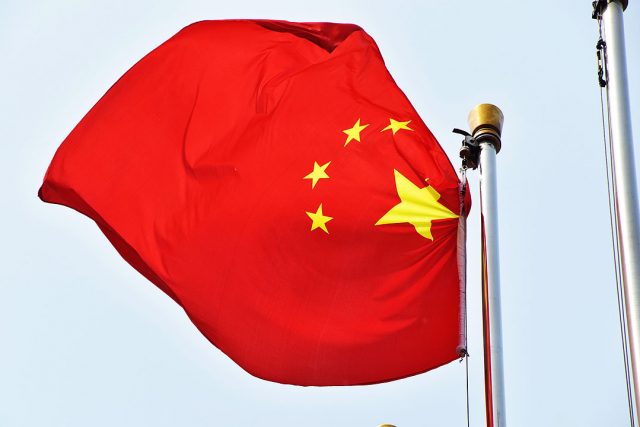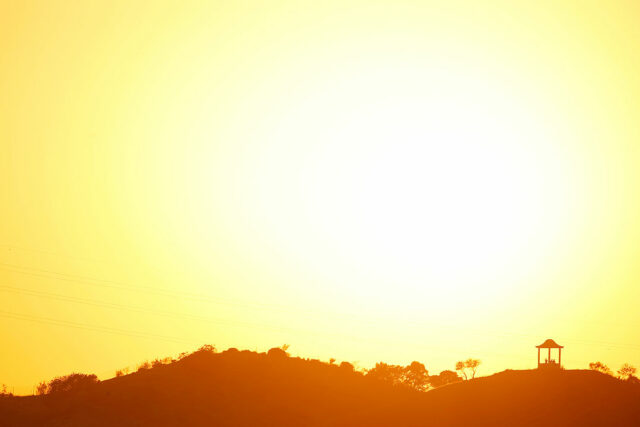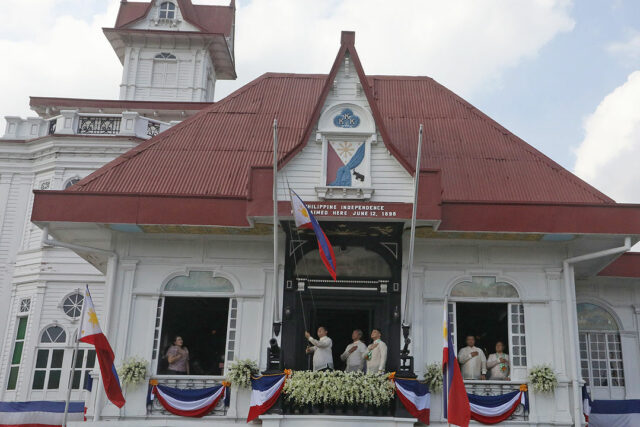Amid the noise and clutter of the just concluded election campaign, one urgent national — indeed global — issue went unnoticed: climate change.
Hardly surprising. Talking about climate change in a political rally is like delivering a speech with marbles in your mouth. The subject is complicated. It won’t win you votes.
Politicians prefer to talk about creating jobs, raising incomes, building homes, or providing free medical care. But unless we deal with climate change, those glitzy promises will soon lose their glitter.
The urgency of climate change action was highlighted by the latest report of the Intergovernmental Panel on Climate Change (IPCC), the international body for assessing the science related to climate change.
Released on April 4, the IPCC report warned that the world was running out of time. It said that unless countries acted quickly to cut greenhouse gas emissions, the goal of net zero emissions by 2050 will soon be beyond reach. Global temperatures will rise beyond the target range of 1.5° to 2° centigrade. This will result in severe changes in the climate.
Translation: Think of having more Typhoon Yolandas and Odettes every year. Or, the water level at Angat Dam regularly falling below critical levels. Or, more crops being devastated either by floods or droughts. Or, coral reefs being destroyed and fish stocks depleted. Or, coastal communities being flooded by rising sea levels.
SEA LEVEL RISE
The consequences of climate change can be so calamitous. Take sea level rise.
According to the IPCC, sea-level rise globally is speeding up. It rose from 1.4 millimeters per year in most of the 20th century to 3.6 millimeters per year from 2006 to 2015. It added that the population exposed to a 100-year coastal flood may rise to about 20% if the global sea level rises further.
This is bad news — particularly for the Philippines which has more than 7,640 islands. About 60% of Filipinos live at or near coastal areas. What’s more, the sea level is rising much faster in this country than elsewhere. According to a 2016 study, sea levels in the Philippines are rising at five times the global average due to regional variations in the impact of climate change on the oceans.
The Philippine government has been ringing alarm bells. At the United Nations (UN) meeting on Oceans and the Law of the Sea in June 2021, Director John Francis Herrera of the Department of Foreign Affairs warned that the future survival of the country is “at risk if sea level rise is allowed to go on unabated.”
The question is: What actions are being taken? This comes to mind when you hear about new reclamation projects being planned for in Manila, Cebu City, and Dumaguete. How can such plans fare given the rising sea levels?
What can be done to face such a problem? There are no easy answers. But some of our neighboring countries are already taking action.
In January 2022, Indonesia’s Parliament passed a law to relocate the nation’s capital from Jakarta to a jungled area of Kalimantan on Borneo island. The relocation program will cost $32 billion and will start sometime between 2022 and 2024. A megacity of 10 million people, Jakarta suffers from chronic congestion, air pollution, and floods due to the combined impact of sea level rise and land subsidence.
Can you imagine the Philippine Congress debating a law to transfer the capital from Manila to the elevated plateau of Bukidnon in Mindanao?
Well, what can the Philippines do to deal with climate change and still pursue development? There are many things. Let’s just take a look at two.
SHIFT TO GREEN ENERGY
First, shift from coal to renewable energy. In this way, the Philippines can help in implementing what experts consider a key action item in the climate agenda: cutting down the use of fossil fuels in power generation.
Right now, coal accounts for nearly 60% of the Philippines’ total energy mix. It has 28 operating coal-fired power plants and 22 more approved for construction by the Department of Energy. Coal is preferred because it is cheap. However, among fossil fuels, coal is the dirtiest. It is No. 1 in the global hit list for decommissioning.
At the UN Climate Change Conference in Glasgow, Scotland last year, the Philippines conditionally pledged to phase out coal in the coming decades. Conditionally, because it is asking for financial help to make that transition.
In line with this, the Philippines and Indonesia have signed a deal with the Asian Development Bank (ADB) under which existing coal power plants will be retired and replaced by renewable energy facilities. The ADB’s target is to retire half of Southeast Asia’s coal plants over the next 10 to 15 years to reduce carbon dioxide emissions by 200 million tons a year.
This transition to green energy will not be easy. Many of the country’s existing coal-fired plants are relatively new. This raises resistance to retiring them early. Moreover, the shift to renewables will also require redesigning and re-equipping the power grid to handle the variable power generated by renewable energy facilities like solar and wind.
Can the Philippines make this shift to renewables? The reward for this effort will be a new, efficient and sustainable power industry that will help reduce our climate change woes. The cost of failure: we will be left behind — again.
CLIMATE RESILIENT AGRICULTURE
Another urgent action agenda item is agriculture. To adapt to changing weather patterns, the Philippines must make its farmers not only more productive but also more climate resilient.
It may help that agriculture is sexy for our politicians. Many candidates in the last elections pledged to help the country’s farmers in various ways. Incoming President Ferdinand Marcos, Jr. said that giving agriculture a boost will be one of his top priorities to make the country food-secure and resilient.
For that to happen, farming advocates say the new President will have to reverse what they call the government’s decades-long bias against agriculture. For many years, they say, the government’s agriculture budget has been underfunded.
What complicates the situation is the food crisis that the world faces today. The global food system has been hit hard by COVID-19, the global energy shock, and the war in Ukraine. Price jumps and supply shortages of petroleum products have made fertilizers more scarce and expensive. In many countries, this forced farmers to cut back on fertilizers and feeds, which in turn is reducing their output and raising the cost of crops and livestock.
The Russian invasion of Ukraine has disrupted supplies of vital food items. Russia and Ukraine account for 28% of globally traded wheat, 29% of barley, and 15% of maize. The longer the war lasts, the larger the impact on global food supplies will be.
Meanwhile, bad weather is taking a heavy toll on farm output. China, the world’s largest wheat producer, has warned that its harvest this year will be its worst ever after major floods delayed planting last year. India, the world’s second largest wheat producer, has suspended wheat exports due to a severe drought. Dry weather has also hit other major wheat producing countries in North America, Europe, and Africa.
While supplies of rice and other key crops remain adequate, the overall food situation is volatile. Over 20 food producing countries have imposed restrictions on food exports. More than one-fifth of the world’s fertilizer exports have been constricted. UN officials warn that countries which rely on food imports may suffer shortages and high prices. The most vulnerable face possible famines.
For now, the Philippines has to play a balancing act of trying to keep local food crop and livestock production from falling while maintaining access to vital food imports. In the longer term, the country must invest heavily to make local agriculture not only more productive but also more climate resilient.
How can Philippine agriculture be made more climate resilient? The many ways this can be done have been spelled out in the “Compendium of Climate-Resilient Agriculture Technologies and Approaches in the Philippines” which was published in 2020.
This report provides a long checklist of action items. These range from using stress-tolerant varieties of rice, corn, and other major crops, to crop diversification and the use of agroforestry in rainfed lowlands, to multi-story cropping, livestock integration, and soil conservation in upland farms.
The Compendium also recommends the use of digital technologies such as mobile apps for remote, real-time pest and disease monitoring and reporting; and the deployment of automated weather stations and drone aircraft to provide farmers with real-time weather information.
All this will take time, money, and sustained effort. The cost of inaction will be much more painful. With climate change, development cannot be sustained if it is not climate resilient.
Ramon “Mon” Isberto is a former journalist and public affairs officer of PLDT and Smart, and upon retirement, is now associated with Action for Economic Reforms.












